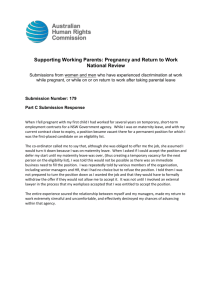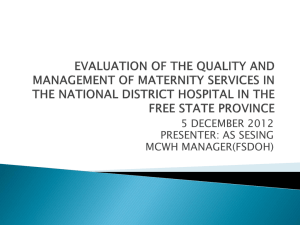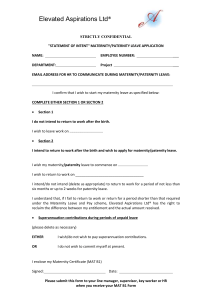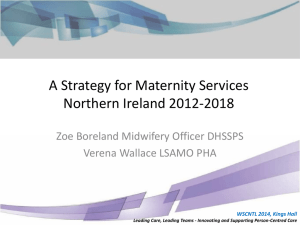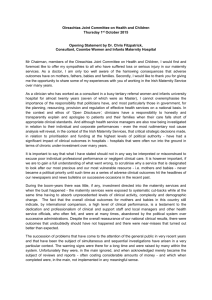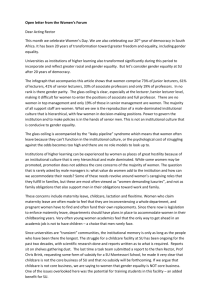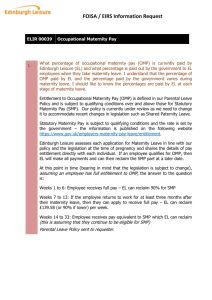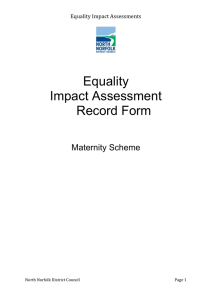Annick Masselot - University of Surrey
advertisement
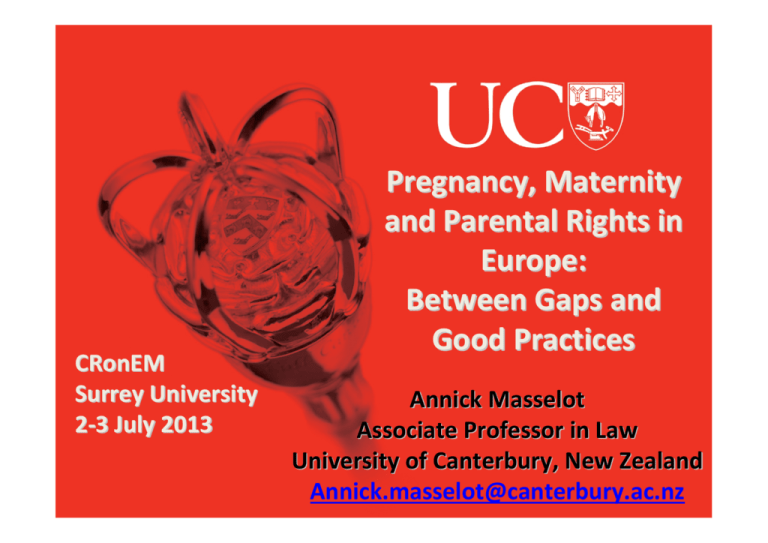
CRonEM Surrey University 2-3 July 2013 Pregnancy, Maternity and Parental Rights in Europe: Between Gaps and Good Practices Annick Masselot Associate Professor in Law University of Canterbury, New Zealand Annick.masselot@canterbury.ac.nz Law v. Practice cultural stereotypes Public v. Private sector Small v. Larger enterprises Health and Safety v. Equality More v. Less rights Access to employment - recruitment process and monitoring Dismissal /pressure to resign Practices contrary to the law • “Mobbing” • Forced resignation • White resignation • First choice for dismissal • Change of employment contract to precarious contract • The impact of the economic crisis Good practice: • Systematic monitoring • Pre-authorisation for the dismissal or the resignation of pregnant and new mothers/parents Non-renewal of the fix-term contract of employment C-109/00 Tele Denmark C-438/99 Melgar Very common in practice contrary to EU law Impact of the economic crisis Good practices: - Disseminating CoJ case law - Pressure from national Courts - Monitoring The right to return • Article 15 of Directive 2006/54 In practice, lack of effectiveness of this provision Impact of long periods of leave Good practice: • Involvement of national courts • Requiring employers provides adequate training Rights accrue during Maternity Leave Holiday and maternity leave Gomez: a worker must be able to take her annual leave during a period that does not overlap with her maternity leave Problem of school teachers Promotions Health & safety considerations Directive 92/85 create two types of obligations: (1)Health and Safety (2)Sex equality •Cases C-66/96 Høj Pedersen and C-207/98 Mahlburg: obligations regarding health and safety cannot be taken into consideration in such a way as to be detrimental to pregnant workers •In practice: Health and Safety has been used as way of excluding women from the workplace. Right to Paid maternity leave • Principle of equal pay (Article 157 TFEU) v. the right to an allowance (Article 11(3) of Directive 92/85) • Should bonuses be taken into consideration when calculating maternity pay? • Case C- 194/08 Gassmayr and C-471/08 Parviainen • Common practise: no payment of specific bonuses attached to the salary for performance reasons: eg presence bonus, productivity bonus, meal or transportation bonus, • Common exclusion of the Christmas Bonus Good Practice: • Harmonisation and simplification of the policy regarding bonuses Role of fathers Paternity leave Recast Directive Article 16 Member States: overall very minimalistic Gap in EU law Parental leave Framework Directive Variable implementations Gap of EU law: the leave is unpaid Good practices: Involving fathers or carers Goods and Services Private health insurance Financial services Airline requirements Home birth General lack of interest / debate Good Practice: the involvement of the equality bodies in some Member States Is there space for self-regulation? Commercial companies Professional bodies Where to from here? • spread of good practices; • raise awareness of the statutory rights, adequately mainstreaming pregnancy and parenting rights into society; • better access to justice (class actions); • systematic and intrusive monitoring; • Monitoring complemented with automatic sanctions; • increasing role for private industries, commercial companies and professional associations; • promote gender equality and fighting stereotypes, inter alia, by involving men in the care of young children. What is the role of the law? What is the point? How to bring theory into this paper???
